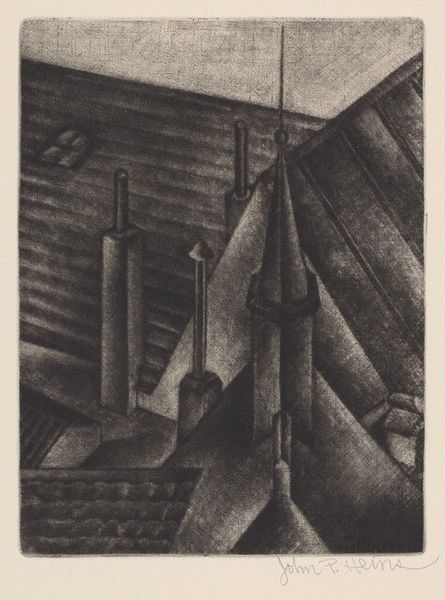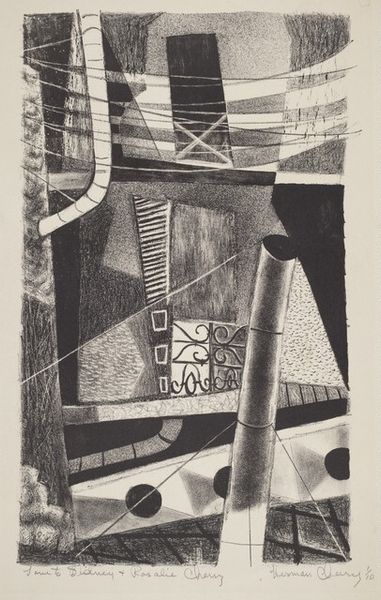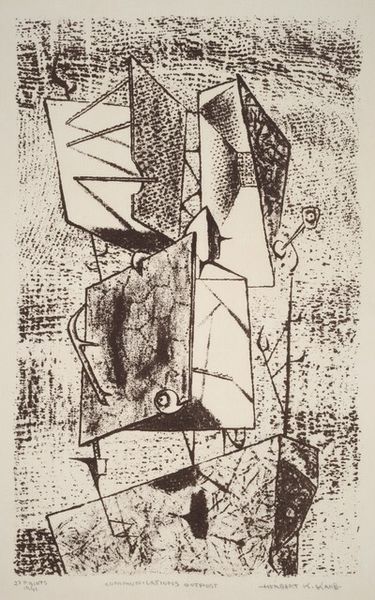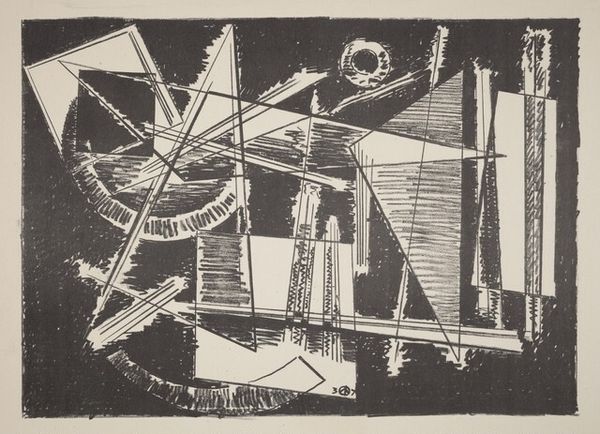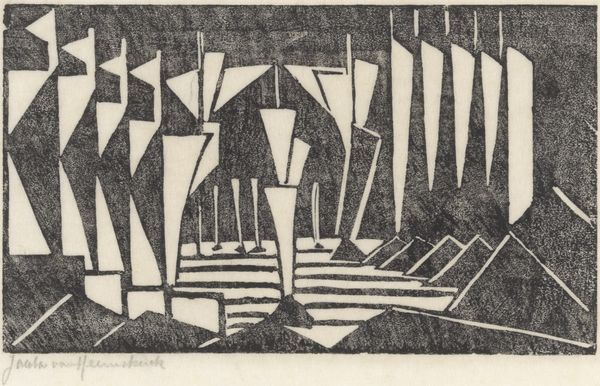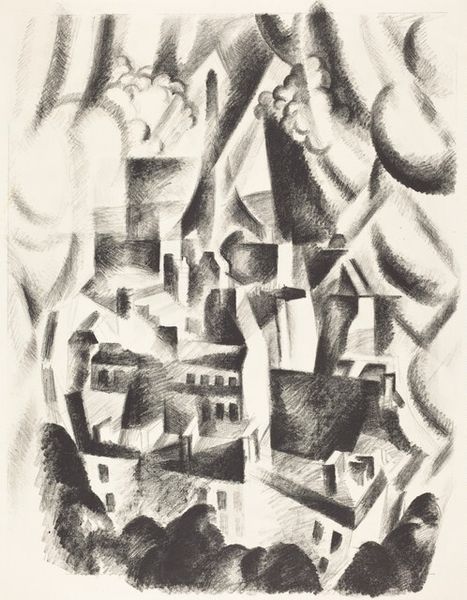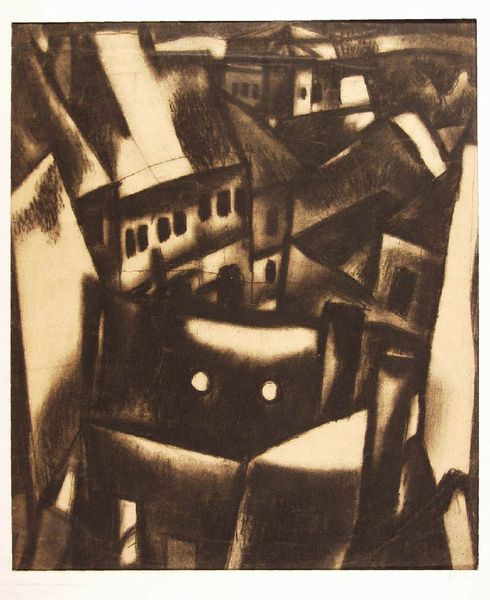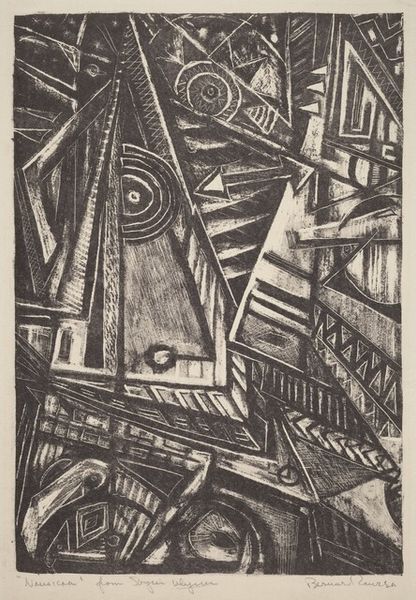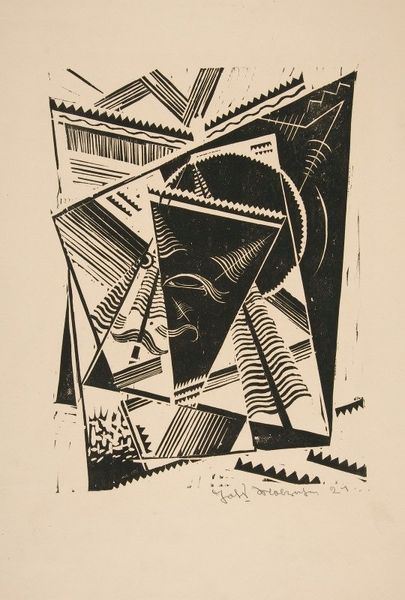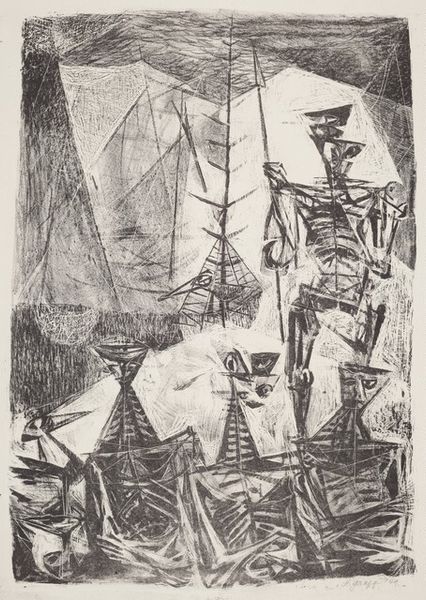
#
precisionism
# print
#
geometric
#
abstraction
#
cityscape
Dimensions: image: 23 x 17.2 cm (9 1/16 x 6 3/4 in.) sheet: 30.8 x 24.1 cm (12 1/8 x 9 1/2 in.)
Copyright: National Gallery of Art: CC0 1.0
Curator: Here we have Burgoyne Diller's "Shop Tanks," a print from circa 1932-1933. The piece clearly shows Diller’s Precisionist approach and his interest in depicting urban structures with geometrical elements. Editor: My first impression is of a silent, watchful scene. It’s almost gothic in its starkness and sharp contrasts—those towers loom like strange sentinels. The textures feel dense, too. Curator: Yes, it echoes the clean lines and simplified forms prevalent in industrial design of the time. There is also a strong commentary in relation to the idealization of industrial progress common during the early 20th century in America, but presented in this unusual monochromatic aesthetic, it is charged with emotion. Editor: I’m particularly drawn to how Diller plays with perspective. Those water tanks, or silos maybe, become symbolic guardians, reflecting our collective anxieties and aspirations about industrial advancement. Even that stylized cloud seems freighted with symbolic meaning, like an omen. Curator: You can interpret those industrial shapes through the lenses of architectural history and design trends as well. It can be seen as a celebration and scrutiny of infrastructure itself during an era of significant social and economical transitions, from pre-Depression prosperity to the austere environment of the 30’s. The piece invites questions on industrial power and societal anxieties. Editor: It certainly does. Diller presents symbols that continue to resonate and perhaps warn of unchecked technological ambition, all shrouded in visual echoes that remain charged today. The recurring shape of tanks and the looming textures feel ominous, reminding us of how those elements infiltrate both our culture and our psyches. Curator: Right, the tanks, seemingly functional structures, turn into visual icons with strong cultural power, almost propagandistic, making one question their purpose and symbolism within the greater American landscape and its social rhetoric. Editor: Considering the era, the anxieties over industrialization certainly seep into the imagery, rendering ordinary objects into something altogether more unsettling. It is interesting to ponder on that! Curator: Definitely a conversation starter for a lot of analysis through the role that art plays in echoing—and also shaping—societal perceptions and responses.
Comments
No comments
Be the first to comment and join the conversation on the ultimate creative platform.
